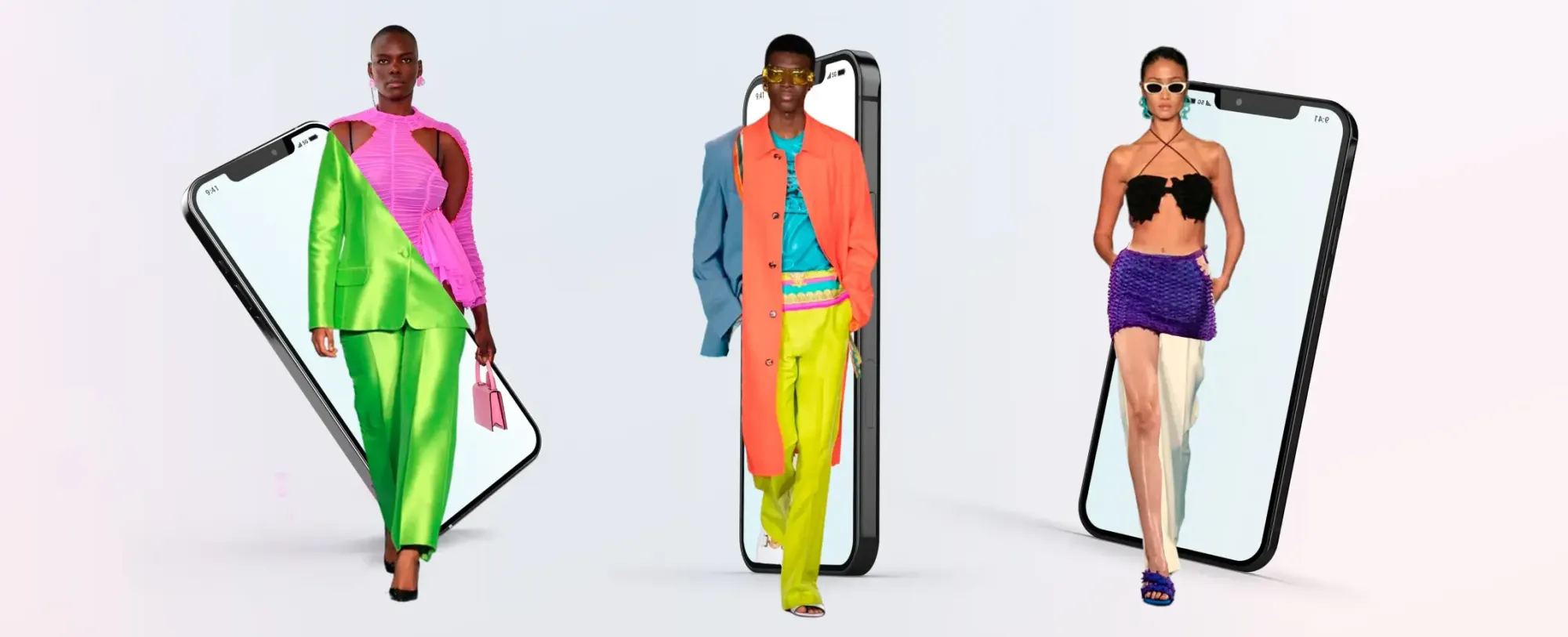Virtual Try-On: How Computer Vision AI Helping Retail To Save Costs

Table of Contents
- Introduction
- Computer Vision in Visual Try-On
- Building the Model
- Integration and Deployment
- Challenges and Solutions
- Conclusion
- Frequently Asked Questions
Introduction
Introducing Ben a shopkeeper who delivers services through an online ecommerce store.He provides free return shipping since online clients prefer to shop from ecommerce stores that offer it.
Many customers ordered things online and returned them if they were dissatisfied with what they received or just changed their minds.He was recurring huge losses.
According to Snap's Global Product Marketing Lead, businesses lose up to $550 billion every year due to customer returns.
Mckinsey discovered that 70 percent of returns were due to poor fit or style, implying that shopping tools are an important tool for reducing returns and increasing consumer experience.
This was problematic until virtual try-on came into picture.Ben's return rate has dropped drastically since the ecommerce site introduced the virtual try-on feature.
It has an impact on the retail industry by providing a more accurate portrayal of how virtual try-on garments and accessories will fit and look.
VTO (Virtual Try-On) technology greatly reduces the possibility of returns, which benefits both customers and retailers.Let's take a deep dive into virtual try-on with this blog.
Computer Vision in Visual Try-On?

- Cameras record your movements and identify the garments you pick up.
- Advanced algorithms generate an accurate digital avatar of your body form and size, guaranteeing that virtual garments fit correctly.
- Clothes scanned into the system are quickly recognised, even without barcodes, allowing you to mix and match with ease.
- Fabrics with unique textures and movements are precisely replicated on your avatar, giving the impression that you are truly wearing them.
- The virtual lighting adjusts to match the real world, resulting in a seamless and realistic experience.
- Your avatar mimics your movements in real time, allowing you to see how your garments flow and respond as you stroll, spin, or strike a pose.
- AI analyses your preferences and previous purchases to recommend designs and colours that you might enjoy, almost like having a virtual stylist by your side.
- Experiment with different colours, patterns, and even personalised designs on your avatar before purchasing the real thing.
- Virtually compare different sizes and styles to get the right fit, which reduces returns and waste.
Building the Model
1.Data Collection
- Ensure that your dataset contains a varied selection of clothing pieces, such as shirts, bottoms, dresses, and accessories. Include changes in patterns, colours, and textures to improve the model's capacity to handle a variety of products.
- Take photos or videos of different models wearing the apparel goods. This covers different body kinds, sizes, and forms to accommodate a wide range of users.
- Capture Images or movies of models from various perspectives and poses. This is essential for training the model to comprehend how clothing fits and appears from various angles.
- Make sure that the videos and images are of high quality. Clarity and detail in data are critical for effective visual simulations. High-resolution photos allow the model to capture detailed features of the clothes.
- Pre-defined datasets are also available on a variety of websites, including Kaggle,UC Irvine Machine Learning Repository,Dataset Search etc.
2.Data Annotation

- Annotate the dataset with relevant data such as important spots on clothing items, body landmarks, and any other details required to train the model. This annotated data is critical to supervised learning.
- Use bounding boxes to highlight each item's location while detecting objects.
- Use professional annotation software or platforms to streamline and ensure uniformity. Either a manual approach or specific annotation tools like Labellerr can be utilised for this.
3.Model Selection
Options include:
- GANs such as CycleGAN for image translation.
- The DeepFashion2 Pose Transfer Model for fashion tasks.
- VITON designed specifically for virtual try-on.
- A combination of OpenPose and clothing segmentation models for detailed control.
- StyleGAN2 for high-quality image synthesis.
- Pix2PixHD for high-resolution translation.
The option is determined by criteria such as dataset qualities, computational resources, and use case requirements.
4.Model Training
- Divide your data into training and validation sets to assess model performance.
- Feed your data to the model in batches so it can learn and change its internal parameters.
- Experiment with different learning rates, optimizer, and other parameters to see how they affect performance.
- The loss function measures how wrong the model's predictions are, and the optimizer instructs it to minimize that error. Cross-Entropy loss and the Adam optimizer are two popular options.
- To analyze progress during training, keep track of metrics like accuracy, precision, and recall.
5.Model Optimization
Optimization entails improving the architecture and parameters to enhance realism and user experience.
- Begin by fine-tuning hyper parameters like learning rates and batch sizes to ensure optimal convergence throughout training.
- Experiment with different model topologies, using strategies such as attention processes or additional layers to optimize clothing item placement and alignment.
- Consider applying post-processing procedures to remove artifacts and improve visual quality.
- Regularly analyses the model's performance using relevant measures, such as clothing fit and user happiness, and iterate on the design in response to input.
- Consider hardware acceleration or model quantization to improve deployment efficiency and provide users with a seamless and responsive virtual try-on experience.
6.Evaluation and refinement
- Evaluate the model's performance using a variety of parameters, such as visual similarity, clothing fit, and overall user happiness.
- Gather feedback from users via surveys or user testing sessions to find areas for improvement.
- Use quantitative measurements like precision, recall, and accuracy to objectively assess the model's effectiveness.
- Iterate on the model based on the evaluation findings and user comments by fine-tuning its architecture, tweaking hyper parameters, or incorporating additional training data to address specific deficiencies.
- This iterative approach improves the model's accuracy, flexibility to various fashion styles, and overall usefulness, ensuring that the virtual try-on experience meets or surpasses users' expectations.
Integration and Deployment

Integration
- Integration entails incorporating the trained model into the chosen platform, such as a mobile app, a website, or an augmented reality experience.
- Check compatibility with the chosen framework and address any dependencies.
- Implement a user-friendly interface that allows smooth interactions, allowing users to easily try on virtual outfits.
Deployment
- For deployment, optimize the model for optimal execution, taking into account aspects such as inference speed and resource utilization.
- Investigate hardware acceleration possibilities and model quantization to improve performance, particularly in real-time applications.
- Test thoroughly in a production environment to detect and resolve any deployment-related issues.
- Create a dependable and scalable infrastructure to handle the anticipated user load, and think about incorporating continuous monitoring for performance metrics.
Challenges and Solutions
- Creating a VTO model that appropriately depicts all body types, sizes, and ethnicity is crucial for avoiding bias and ensuring that everyone feels included in the fashion story.
- Collecting diverse and high-quality data can be costly and time-consuming, resulting in models that do not generalize effectively to new circumstances.
- Not everyone welcomes new technologies, and others may find VTO overly futuristic or gimmicky. Building trust and demonstrating the benefits is critical.
- To achieve widespread acceptance, VTO technology must be user-friendly and effortlessly integrated into existing retail settings.
- Consumers must be convinced that their data is protected and used properly, particularly in light of concerns about body image and privacy.
Conclusion
Now that VTO has been smoothly incorporated into the retail sector, shoppers may dance with garments in the privacy of their digital changing rooms, boosting confidence and lowering returns. This is just the beginning , where each click reveals a universe of limitless possibilities, ideally suited to you. So, go into the future, embrace the magic of VTO, and let your fashionable desires fly.
Frequently Asked Questions
Q1.What technology is used in virtual try on?
Virtual try-on technology enables shoppers to digitally try on clothing, makeup, and other items before purchasing them. The system uses augmented reality and machine learning (AI) to duplicate the in-store fitting experience.
Q2.How AI makes virtual try on more realistic?
Image-based scattering enables the AI to create realistic pictures of how clothing drapes and conforms to various body types. At the same time, cross-attention makeup ensures that the virtual clothing smoothly mix with the wearer's features, taking into consideration factors like as skin tone, hair color, and body type.

Simplify Your Data Annotation Workflow With Proven Strategies
.png)


